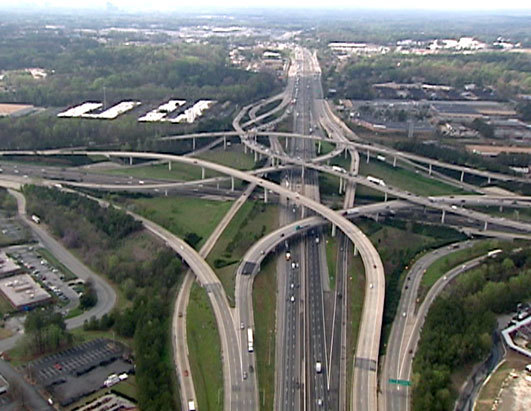Putting aside the major imponderable—the outcome of the presidential and congressional elections that inevitably will impact the federal transportation program — what can the transportation community expect in 2012?
Will Congress muster the will to enact a multiyear surface transportation reauthorization? Or will the legislation fall victim to election year paralysis? What other significant transportation-related developments lie ahead in the new year? Here are our speculations as we gaze into our somewhat clouded crystal ball.
A Multiyear Bill?
In 2011, the Senate Environment and Public Works (EPW) Committee passed a bipartisan, two-year surface transportation bill (MAP-21), and the Senate Commerce Committee approved the measure’s safety, freight, and research components. But at the end of the year, the bill’s titles dealing with public transportation, intercity passenger rail, and financing were still tied up in their respective committees (Banking, Commerce, and Finance). What’s more, the Senate bill ended up $12 billion short of meeting the $109 billion mark set by the EPW Committee as necessary to maintain the current level of funding plus inflation.
Finance Committee Chairman Max Baucus (D-MT) has yet to identify publicly the offsets needed to cover the final $12 billion of the bill’s cost. Repeated assurances by EPW Committee Chairman Sen. Barbara Boxer (D-CA) that the necessary “pay fors” have been found have met with widespread skepticism. It’s not entirely clear the bill, as approved on the Senate floor, will contain the full $109 billion in funding.
Cloudy Prospects for House Bill
On the House side, the fate of a multiyear bill remains equally clouded. In November, Speaker Boehner announced he would unveil a combined transportation and energy bill, dubbed the “American Energy & Infrastructure Jobs Act” (HR 7). The bill would authorize expanded offshore gas and oil exploration and dedicate royalties from such exploration to “infrastructure repair and improvement” focused on roads and bridges.
However, questions have been raised about this approach. Numerous critics, including Sen. Boxer and Sen. James Inhofe (R-OK), the EPW committee’s ranking member, allege the royalties the House is counting upon would fall billions of dollars short of filling the gap in needed revenue. (The gap is estimated at approximately $75 billion to 80 billion over five years).
What’s more, using oil royalties to pay for transportation would essentially destroy the principle of a trust fund supported by highway user fees. In sum, the House bill, if unveiled in its currently proposed form, will meet with a highly skeptical reception in the Senate.
Assuming some form of both reauthorization bills will gain approval in February, will the two Houses be able to reconcile their widely different versions by March 31, when the current program extension is set to expire? Or will the negotiations bog down in an impasse reminiscent of the current payroll tax stalemate? Given the importance both sides attach to enacting transportation legislation, and given the desire of both sides to avoid the blame of causing an impasse, we think the odds are in favor of them reaching an accommodation—probably more along the lines of the Senate’s two-year bill than the still vague and unfunded House five-year version.
California Train Derailment?
In 2011 Congress effectively put an end to the Obama administration’s high-speed rail initiative by denying any funds to the program for a second year in a row. Does the same fate await the embattled $98 billion California high-speed rail project at the hands of California’s governor and state legislature in 2012?
At a December 15 congressional oversight hearing, witnesses cited a litany of reasons the projects is a “disaster,” in Rep. John Mica’s (R-FL) words. Among them: unrealistic assumptions concerning future funding; quixotic choice of location for the initial line section (“in a cow patch,” as several lawmakers remarked); lack of evidence of any private investor interest in the project; eroding public support (nearly two-thirds of Californians would now oppose the project if given the chance, according to a recent poll); “devastating” impact of the proposed line on local communities and farmland; unrealistic and outdated ridership forecasts; and lack of proper management oversight.
More recently, the project came under additional criticism. The job estimates claimed by the project’s advocates (“over one million good-paying jobs” according to House Minority Leader Nancy Pelosi) have been challenged— and acknowledged by project officials— as grossly inflated. Four local governments in the Central Valley, including the City of Bakersfield, formally voted to oppose the project, fearing harmful effects on their communities. And agricultural interests are gearing up for a major legal battle, according to the Los Angeles Times.
Most unsettling for the project’s future is the inability of its sponsors to come up with the needed funding. To complete the “Initial Operating Segment” to San Jose (or the San Fernando Valley) would require an additional $24.7 billion. To finance this construction, the California Rail Authority’s business plan calls for $4.9 billion in Proposition 1A bonds and assumes $19.8 billion in federal contributions—$7.4 billion in federal grants and $12.4 billion in so-called Qualified Tax Credit Bonds (QTCB).
But the latter assumptions came in for sharp congressional criticism as so much wishful thinking, given the bipartisan congressional refusal to appropriate funds for high-speed rail two years in a row.
C. Kenneth Orski ([email protected]) is editor and publisher of Innovation Briefs, where a version of this article first appeared. Used with permission from innobriefs.com.




